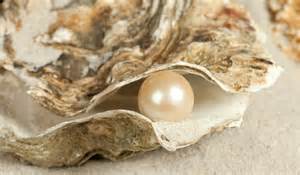Избранное из переводов Дикинсон. 320
We play at Paste —
Till qualified, for Pearl —
Then, drop the Paste —
And deem ourself a fool —
The Shapes — though — were similar —
And our new Hands
Learned Gem-Tactics —
Practicing Sands —
Emily Dickinson
Из глин замес —
Жемчужину создать —
Затею брось —
И не дурачь себя —
Хотя похожи — формы — буc —
Рукам узнать,
Как жемчуг тoт песком —
Отшлифовать —
Прим. переводчика.
Taken from Internet:
"We play at Paste" (320) can be viewed as a comment on spiritual or personal growth, but it is probably chiefly concerned with the growth of a poet's craftsmanship. The poem provides a fine illustration of the allegorical method in a short poem. "Paste" refers to artificial jewelry. Adults do not play with or at the process of making artificial jewelry as a preparation for making real jewelry, nor do they usually regard themselves with scorn when they look back at artificial playthings and adornments.. The scene as presented and the strong emotions associated with it are not realistic as given. Thus the paste, the real pearl, and the maker's hands are not ordinary symbols. Rather, they are allegorical symbols (or images or emblems). If the speaker, distancing herself slightly and making herself one of a group by the use of "we," drops an artificial — that is, inauthentic — creation and judges herself ill for making it, objects of art — poems for Emily Dickinson — seem the most likely subject. In the second stanza, she gains the equilibrium of maturity and looks back to see that her earlier creations prepared her for the later and more genuine ones. "New hands" emphasizes the growth of creative skill and perhaps extends the change from artistry to the whole person."
Стихи.ру 06 февраля 2014 года
Свидетельство о публикации №122042507214

